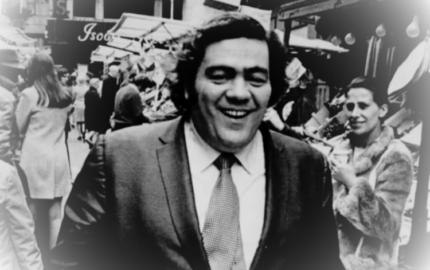Mark Kramer cautions his students against writing "How I Got the Story" stories. A particularly amateurish version of such a story might begin: "I felt nervous as I walked into Jane Doe's elegant office. I knew she was one of the most brilliant scientists in the world. As I got out my note pad, she offered me a cup of coffee."
Occasionally, though, "how I got the story" is a useful approach. "Smoking 'em Out" is one such case. It's Duhigg's account of trying to break through the secrecy and exclusiveness of a Philip Morris promotional tour on Utah's public lands, for young men and women from countries around the world. He recounts his adventures as pesky reporter. In doing so, he gives us some wonderfully ironic moments, such as when a company executive says, "We want the [participants on the tour] to experience the freedom of America. And we find this is easiest when Americans are not part of the event."
In trying to exercise his right to cover an event on public land, Duhigg exposes the tensions between American realities and American myths.
Throughout the story, Duhigg refers to himself, in news fashion, as "the reporter." We surprised ourselves by finding this effective. Usually we'd argue for using the first-person over such a stilted device. But in this case, it becomes a useful, almost literary, tool, one that highlights the strange drama that Duhigg recounts. As The Reporter, he becomes archetypal, a character in a play that is larger than himself. He also uses it to go after humor, writing: "Where are Woodward and Bernstein when you need them?"
Read “Smoking 'em Out,” by Charles Duhigg
Occasionally, though, "how I got the story" is a useful approach. "Smoking 'em Out" is one such case. It's Duhigg's account of trying to break through the secrecy and exclusiveness of a Philip Morris promotional tour on Utah's public lands, for young men and women from countries around the world. He recounts his adventures as pesky reporter. In doing so, he gives us some wonderfully ironic moments, such as when a company executive says, "We want the [participants on the tour] to experience the freedom of America. And we find this is easiest when Americans are not part of the event."
In trying to exercise his right to cover an event on public land, Duhigg exposes the tensions between American realities and American myths.
Throughout the story, Duhigg refers to himself, in news fashion, as "the reporter." We surprised ourselves by finding this effective. Usually we'd argue for using the first-person over such a stilted device. But in this case, it becomes a useful, almost literary, tool, one that highlights the strange drama that Duhigg recounts. As The Reporter, he becomes archetypal, a character in a play that is larger than himself. He also uses it to go after humor, writing: "Where are Woodward and Bernstein when you need them?"
Read “Smoking 'em Out,” by Charles Duhigg


